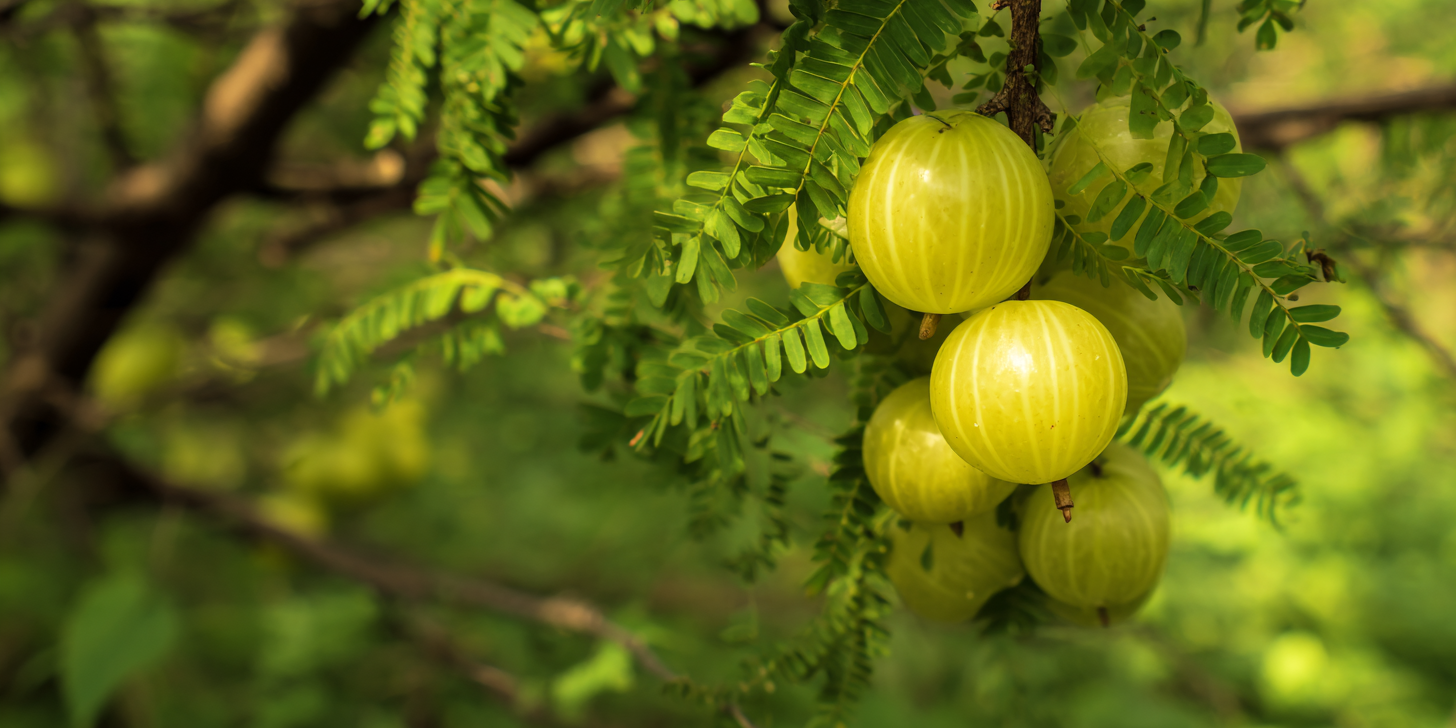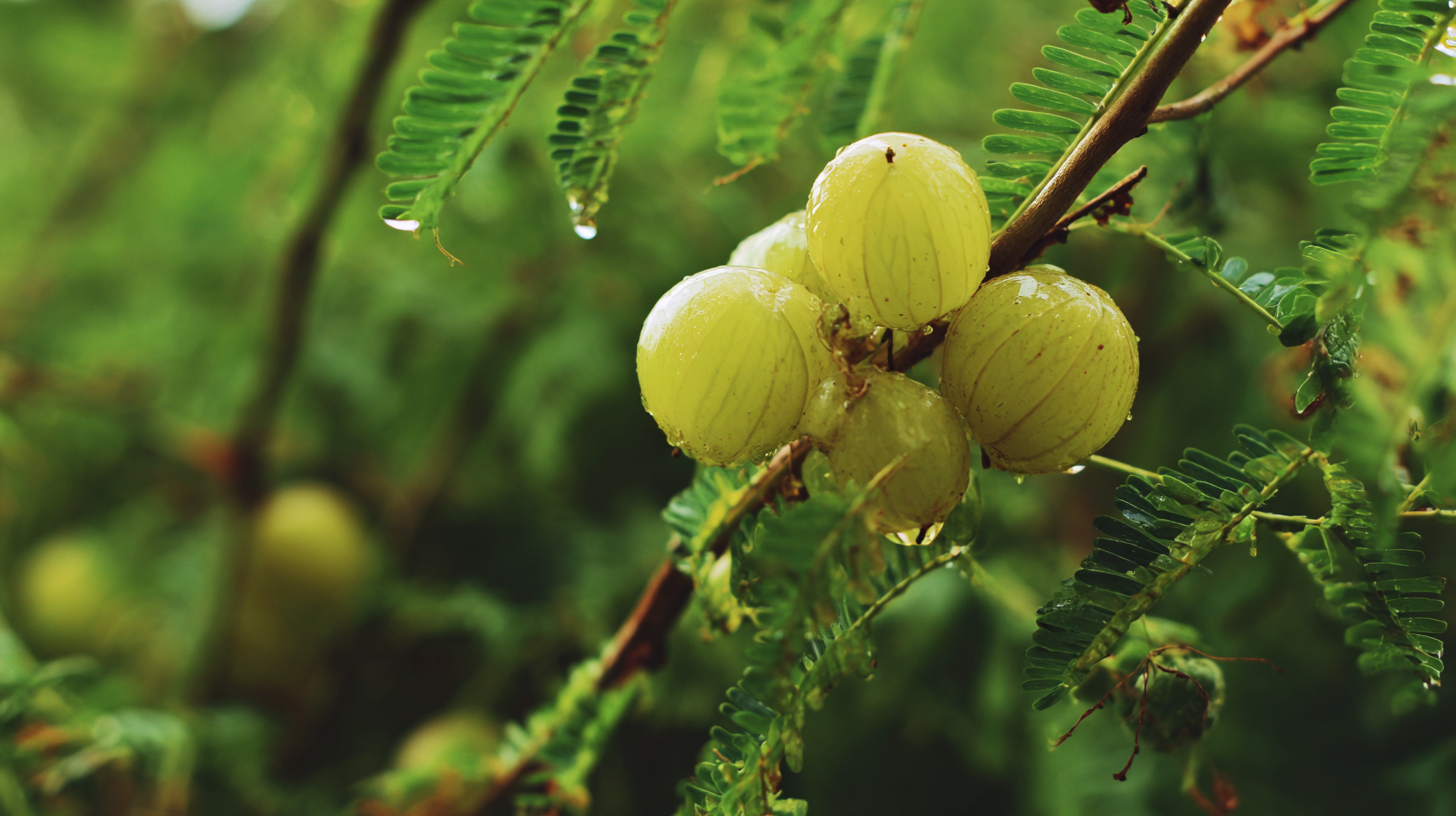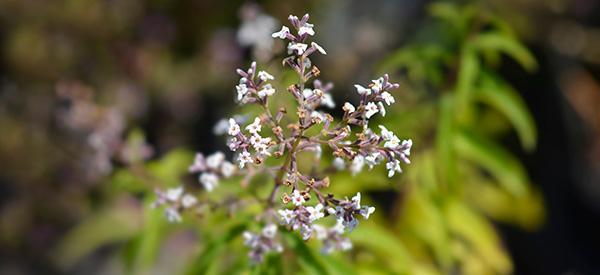
Amla (Indian Gooseberry): Nature’s Vitamin C Powerhouse
If you’re into natural wellness and prepping your pantry for vitality and resilience, you can’t ignore amla—also known as Indian gooseberry (Phyllanthus emblica). This small but mighty fruit has been a staple in Ayurvedic medicine for millennia, treasured for its potent health-enhancing qualities.
What Is Amla?
Amla is a green, golf-ball-sized fruit native to Asia, with a tart, bitter, and astringent taste. Every part of the plant—the fruit, leaves, seeds, and even the bark—has its traditional uses. For centuries, it has been revered not only in India but also in Sri Lanka, China, and other regions of Southeast Asia for its rejuvenating and disease-fighting abilities.
Botanically known as Phyllanthus emblica or Emblica officinalis, amla grows on a medium-sized deciduous tree that can reach up to 60 feet in height. The fruit ripens in the autumn and is usually harvested by hand. Amla is traditionally preserved by drying, powdering, or making into a syrup, oil, or jam, making it accessible all year round.
Nutritional and Medicinal Highlights
Supercharged with Vitamin C & Antioxidants
One small amla contains between 600–700 mg of vitamin C, making it one of the richest natural sources available. Unlike synthetic vitamin C, the ascorbic acid in amla is bonded with tannins, which helps it withstand heat and light during storage and processing. This means the vitamin C content in dried or powdered amla remains potent.
Beyond vitamin C, amla is a powerhouse of other antioxidants, including flavonoids, polyphenols, and tannins. These compounds combat oxidative stress, reduce cellular damage, and support longevity. Regular consumption may help delay signs of aging, strengthen immunity, and contribute to overall metabolic health.
Immune Enhancer
Amla strengthens the immune system by promoting the production and function of white blood cells. Its vitamin C and antioxidant profile help protect these cells from oxidative damage, ensuring a more robust and responsive immune defense.
In traditional medicine, amla is often used to prevent colds and flu, as it enhances the body’s resistance to infection. Modern studies have supported these uses, showing that amla extract may enhance natural killer cell activity and improve antimicrobial resistance.
Liver Guardian
The liver plays a crucial role in detoxifying the body, and amla offers significant support in this area. Studies have shown that amla can help regenerate liver cells, reduce fatty deposits, and improve enzyme function. It has also demonstrated protective effects against chemical-induced liver damage in experimental settings.
This makes amla especially valuable for people exposed to environmental toxins, heavy metals, or even prescription medications that burden the liver. Integrating amla into your diet or wellness routine may help maintain liver function and reduce the risk of chronic liver disease.
Skin and Hair Booster
Amla’s rich vitamin C and antioxidant content support collagen production, which helps keep skin firm and youthful. Regular intake can reduce fine lines, improve skin tone, and promote wound healing. Its anti-inflammatory properties also make it useful for managing skin conditions such as acne, eczema, and psoriasis.
When it comes to hair, amla is often called a “miracle ingredient.” It helps prevent hair loss, stimulate hair growth, and reduce premature graying. Used topically as an oil or mask, it strengthens hair follicles, reduces dandruff, and adds shine. Taken internally, it nourishes the scalp from within.
Other Possible Benefits
In addition to its well-known effects, amla is believed to support eye health. Traditional practitioners have used it to improve vision and slow age-related degeneration. Research has shown that its antioxidant content helps protect retinal cells from oxidative stress, potentially reducing the risk of cataracts and macular degeneration.
Related: 13 Natural Eye Stye Remedies
Emerging studies suggest that amla may possess anti-cancer properties, particularly in slowing the growth of certain tumor cells. It also shows promise in regulating blood sugar and cholesterol levels, making it a valuable addition to a heart-healthy and diabetic-friendly lifestyle. Lastly, its mild laxative effect can aid digestion and promote gut health.
 How to Use Amla
How to Use Amla
Fresh Juice or Powder
Drinking fresh amla juice is one of the most effective ways to harness its benefits. It can be consumed alone or mixed with water, honey, or other juices to balance the strong tart flavor. A daily dose of 1–2 teaspoons can support immunity, digestion, and overall vitality.
Amla powder is a more shelf-stable option and is widely available. It can be added to smoothies, sprinkled on food, or stirred into teas. Many traditional recipes use it in combination with other herbs like turmeric and ginger to amplify its effects.
Tea and Infusion
To make amla tea, steep dried amla slices or powder in hot water for 5–10 minutes. You can enhance the flavor and benefits by adding lemon, ginger, or raw honey. This tea is known for its refreshing taste and immune-boosting properties, especially when consumed regularly.
Infusions can also be cooled and used as a natural facial toner or hair rinse, thanks to amla’s astringent and nourishing properties. It’s a multipurpose remedy that can easily fit into a natural beauty or wellness regimen.
Oil Infusion
Amla oil, made by infusing dried amla in a carrier oil like sesame or coconut, is a staple in Ayurvedic hair care. Applied directly to the scalp, it helps strengthen hair roots, improve circulation, and reduce dandruff and itchiness. Weekly oil massages can also help relax the nervous system.
Some people also use amla oil topically on the skin to soothe inflammation and improve tone. While less common in Western beauty routines, it’s gaining popularity as an all-natural, chemical-free treatment.
Related: Willow Bark Bath Salts for Inflammation
Culinary Uses
In Indian households, amla is frequently pickled with spices, salt, and oil, providing a tangy, probiotic-rich side dish. It is also turned into chutneys and candied for easier consumption, especially by children.
Another traditional preparation is chavanprash, a herbal jam that includes amla as its main ingredient along with dozens of other herbs. It is taken daily to promote longevity, energy, and immune strength. You can also mix amla powder with warm ghee and honey for a quick DIY tonic.
How To Grow Amla
Amla trees are typically grown in tropical and subtropical climates, but with the right conditions and a little patience, they can also be cultivated in temperate regions. Growing amla from seed is possible, though slow, while grafted saplings are faster and more reliable for fruit production.
Amla prefers full sun and well-drained, slightly acidic to neutral soil. It doesn’t require rich soil but thrives with occasional compost or organic fertilizer. Space your plants at least 10–12 feet apart to allow for full growth. Water deeply but infrequently—established trees are drought-tolerant but benefit from occasional deep watering during the growing season. Prune in late winter to encourage a strong central trunk and better air circulation.
How To Grow Amla Indoors in Cold Weather
For those in colder climates, amla can be grown indoors in large containers. Choose a dwarf variety or keep your plant well-pruned to manage its size. Use a deep pot with excellent drainage and a sandy-loam soil mix. Place it in the sunniest window of your home or use a grow light that mimics full-spectrum daylight.
Indoor-grown amla will need a little extra attention—regular misting to maintain humidity, consistent warmth (ideally above 60°F), and gentle fertilization every few weeks during spring and summer. In winter, reduce watering and allow the plant to rest. While it may take a few years to fruit indoors, the tree’s attractive foliage and medicinal value make it well worth the effort.
Tips & Cautions
While amla is generally safe for most people, it should be consumed in moderation. Overconsumption may cause digestive upset, including acid reflux or loose stools. Start with small amounts and gradually increase as your body adapts.
People with blood sugar or blood pressure conditions should monitor their levels, as amla can enhance the effects of certain medications. Always consult with a healthcare provider before starting any new supplement, especially if you’re pregnant, nursing, or managing chronic illness.
Final Take
Amla is a natural prepper’s secret weapon—jam-packed with vitamin C, antioxidants, and broad-spectrum support across immunity, digestion, liver function, skin, and hair. Whether you’re facing winter illness or prepping your home apothecary, this ancient superfruit deserves a front-row spot in your toolkit.
Its versatility and resilience make it an excellent candidate for long-term storage and use. Whether dried, powdered, pickled, or infused, amla remains potent and powerful. It’s a must-have for anyone looking to build a reliable and natural health stockpile.
Ready to get started? Keep a jar of amla powder in your pantry or make your own juice tincture. When global stock chains falter, your own herbal stash can help keep you in peak condition—naturally.
Before You Go
Big Pharma wants you dependent on pills for pain relief—but nature offers another path. Time-tested herbs like wild lettuce, turmeric, and willow bark have eased pain for centuries, without the gut-wrecking or addictive side effects.
You don’t need a prescription to find real relief. From nerve pain to joint aches, natural remedies can help you reclaim comfort and control without synthetic chemicals. All it takes is one switch, one remedy at a time.
The Forgotten Home Apothecary is your lifeline when crisis hits. With 250 essential herbal remedies, it prepares you for anything—even when pharmacy shelves go bare. Don’t wait. Grab your copy before it’s gone for good.
You may also like:
 Cavities or Gum Disease? Here’s How to Naturally Heal Both
Cavities or Gum Disease? Here’s How to Naturally Heal Both
How to Regrow Your Receding Gums (Video)
This Once-Banned Berry Helps People With Diabetes
My Seven Favorite Herbs for the Allergy Season (and Asthma Too!)






 How to Use Amla
How to Use Amla

